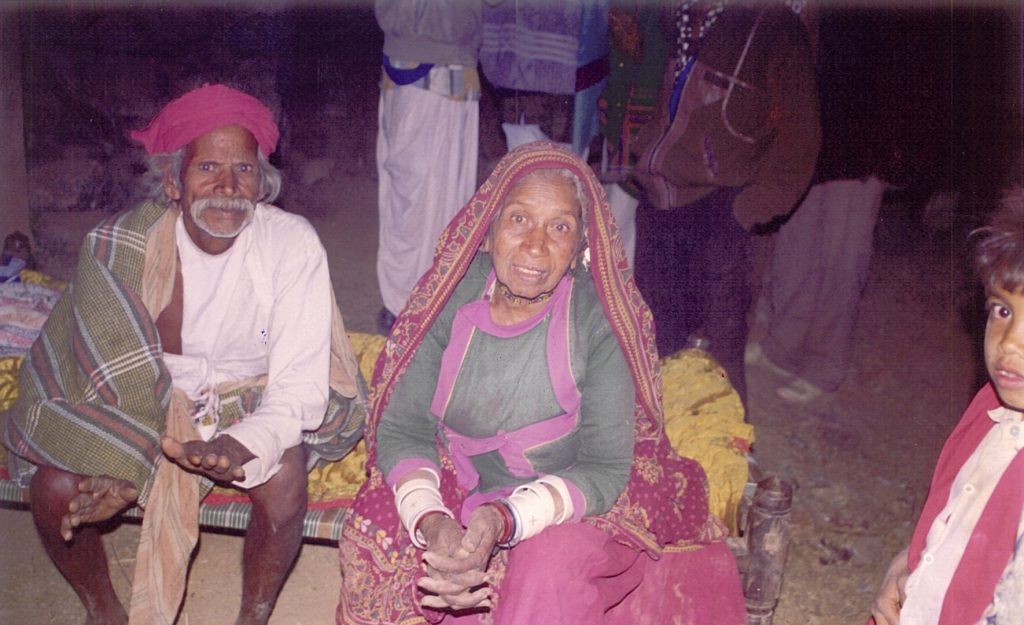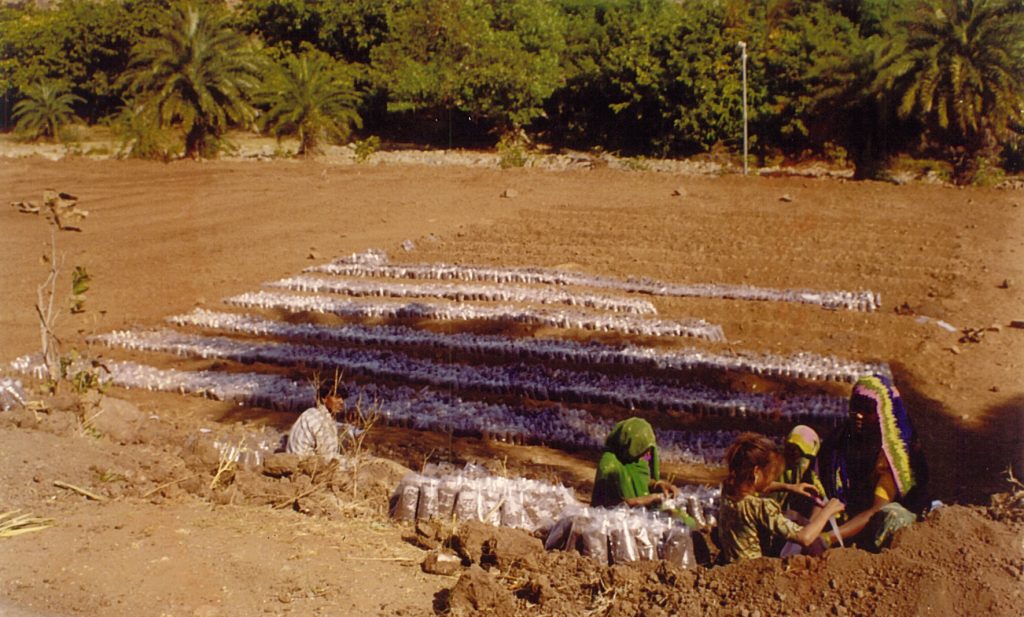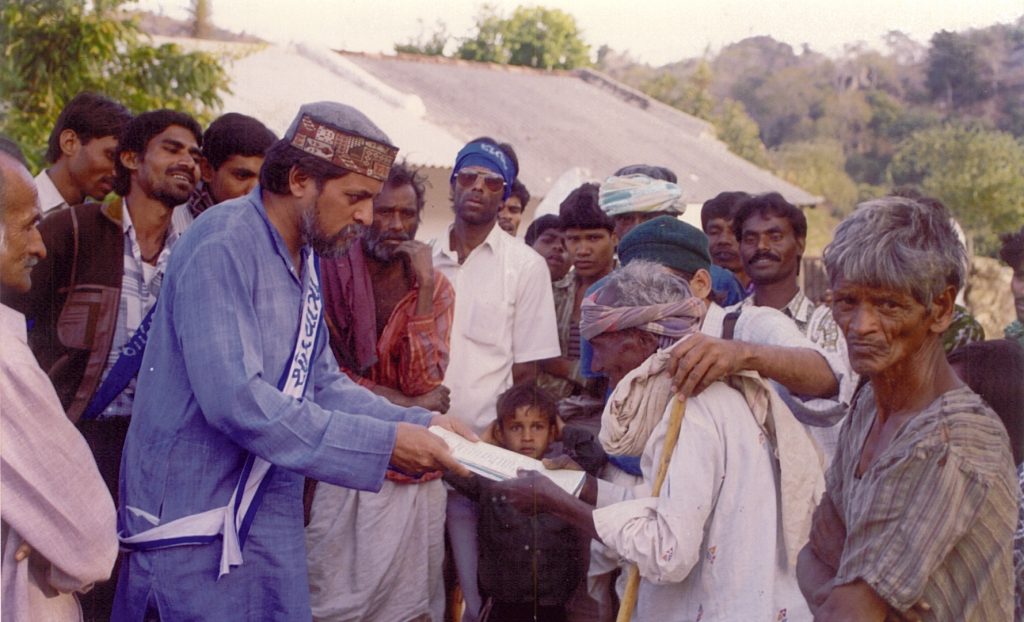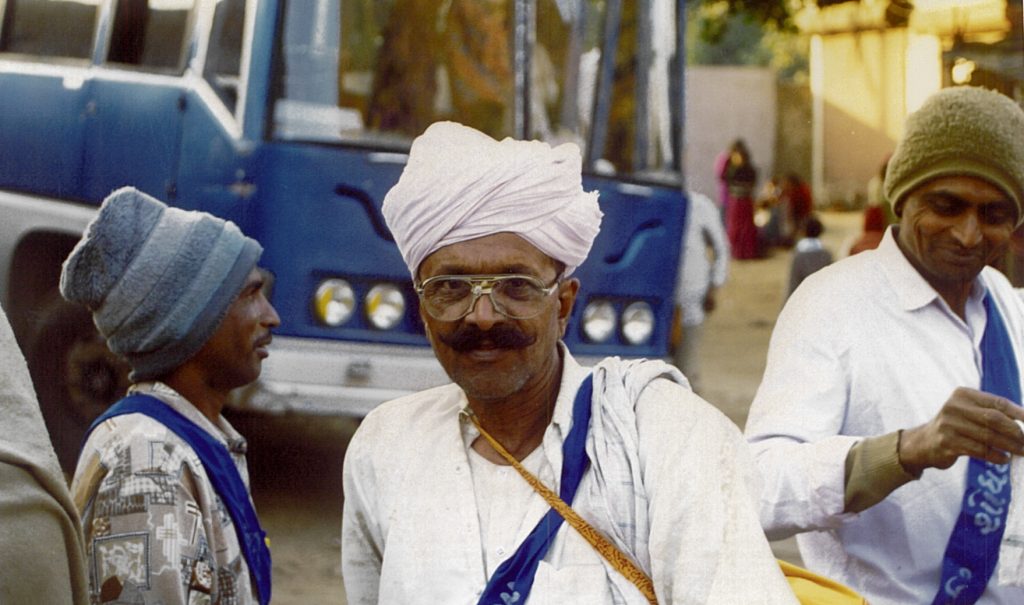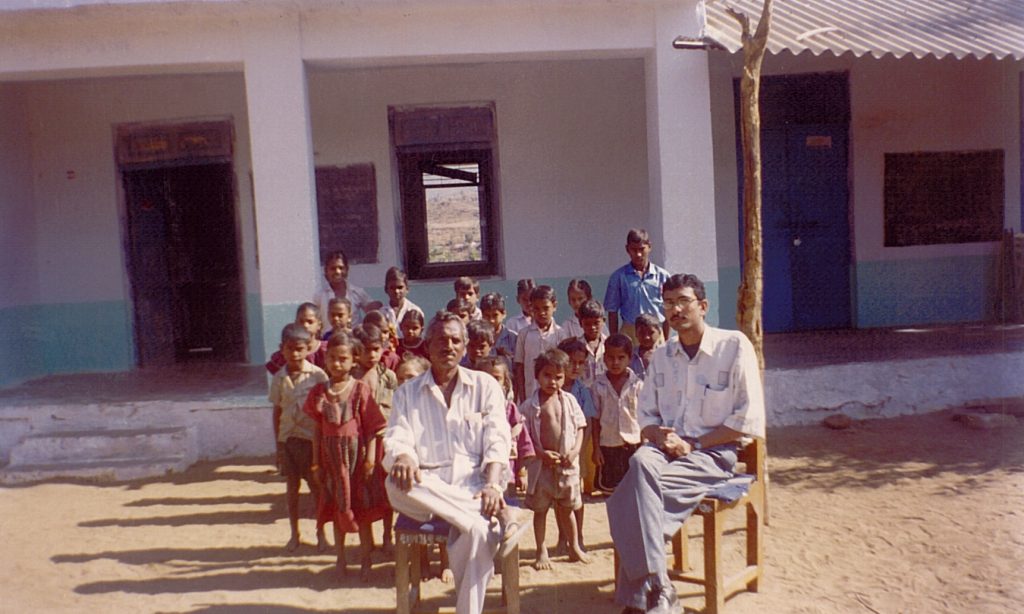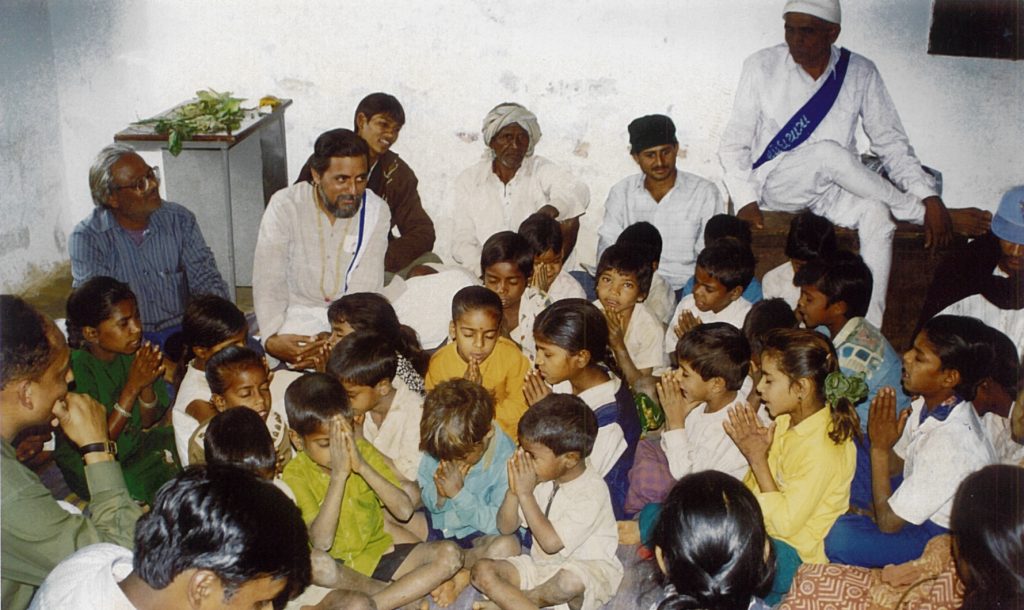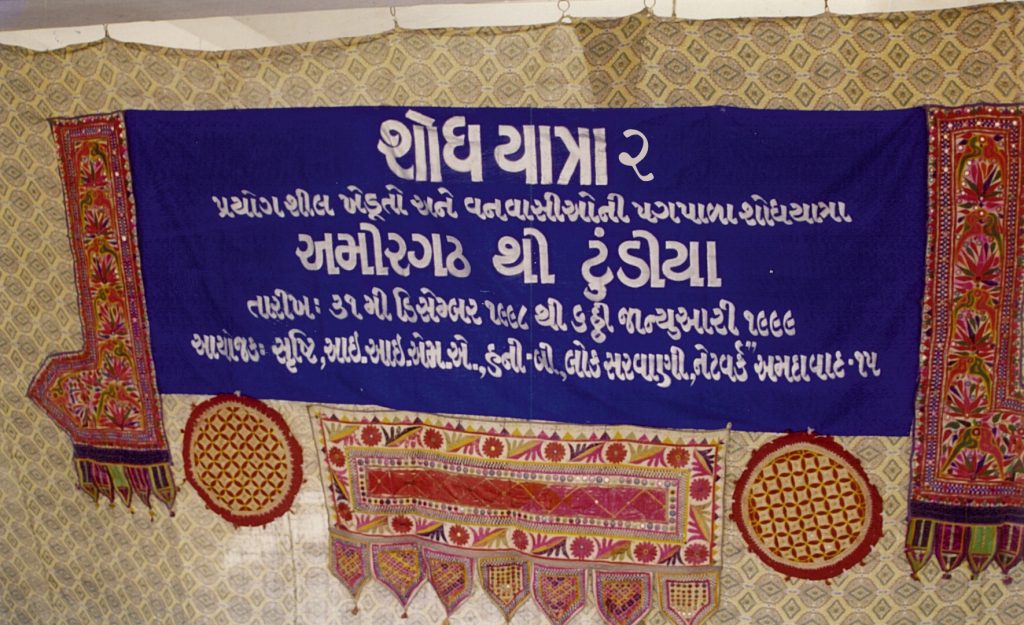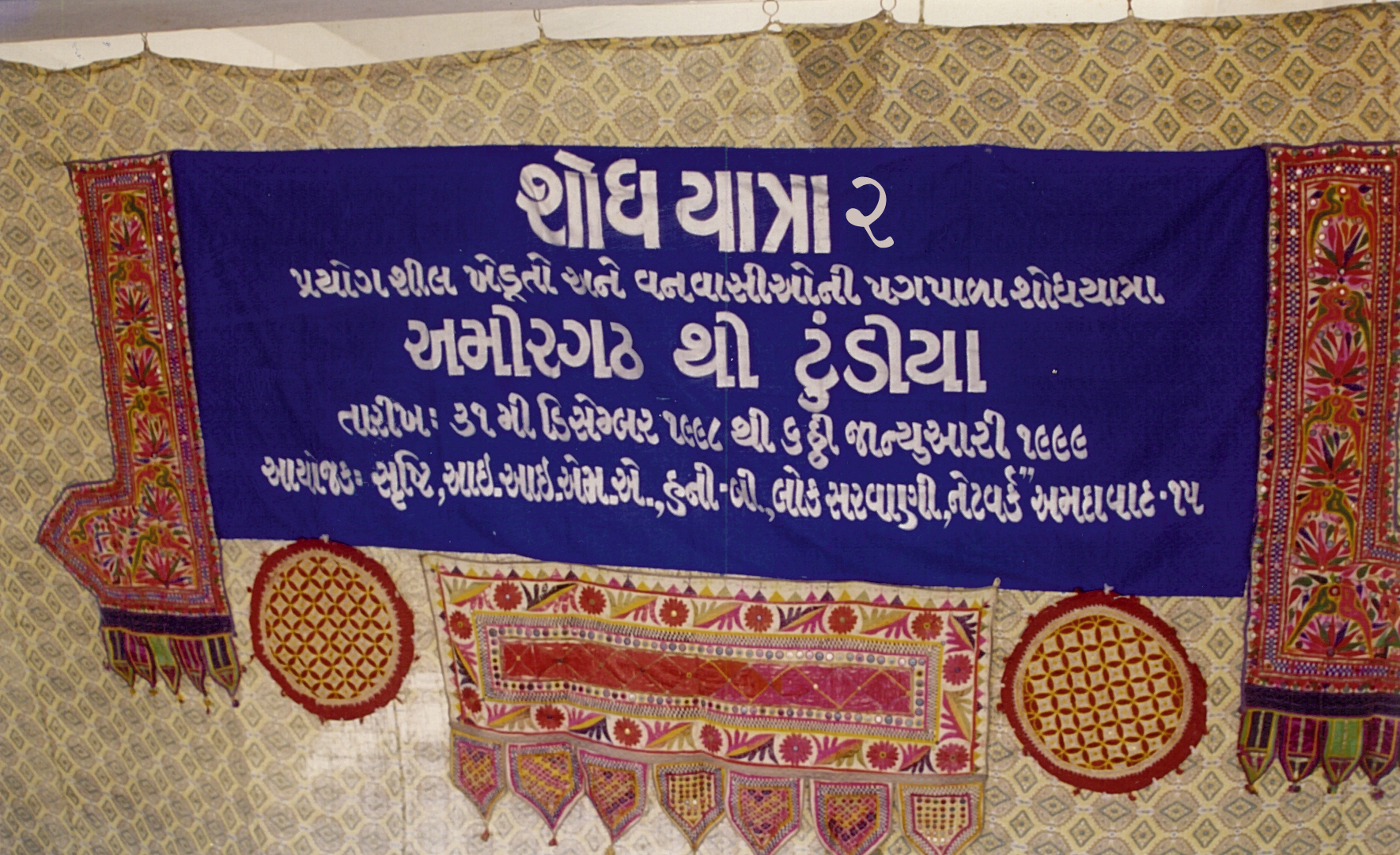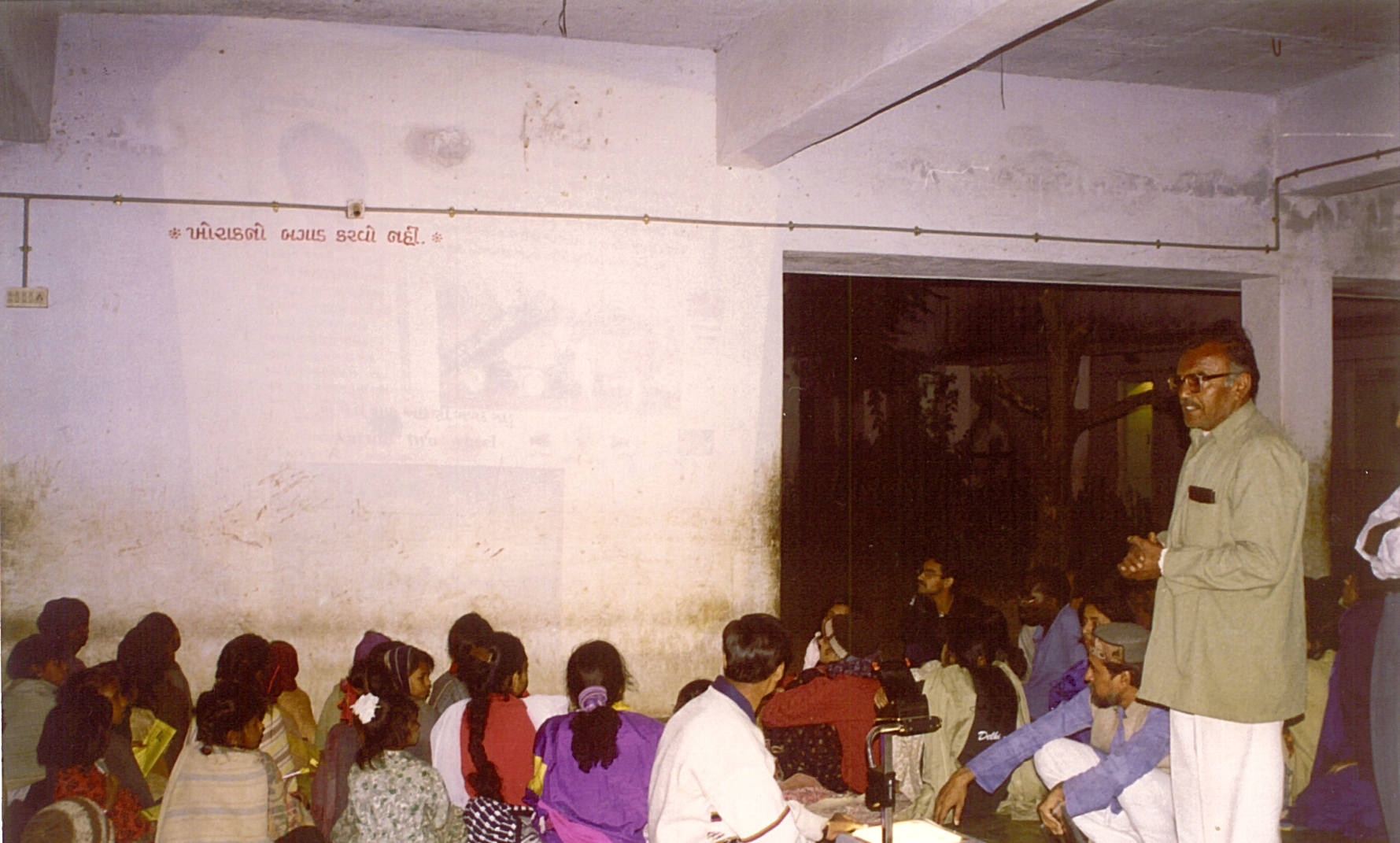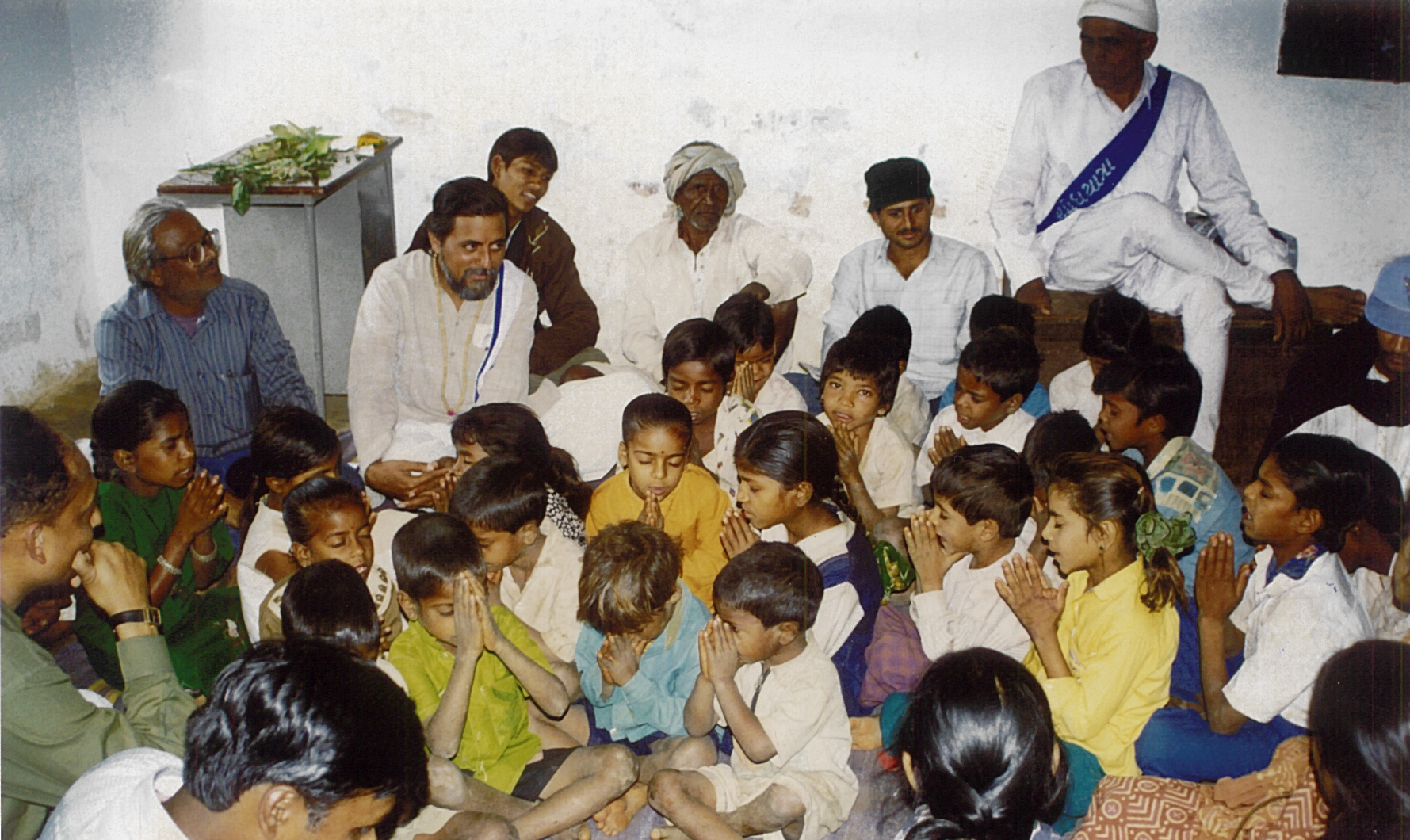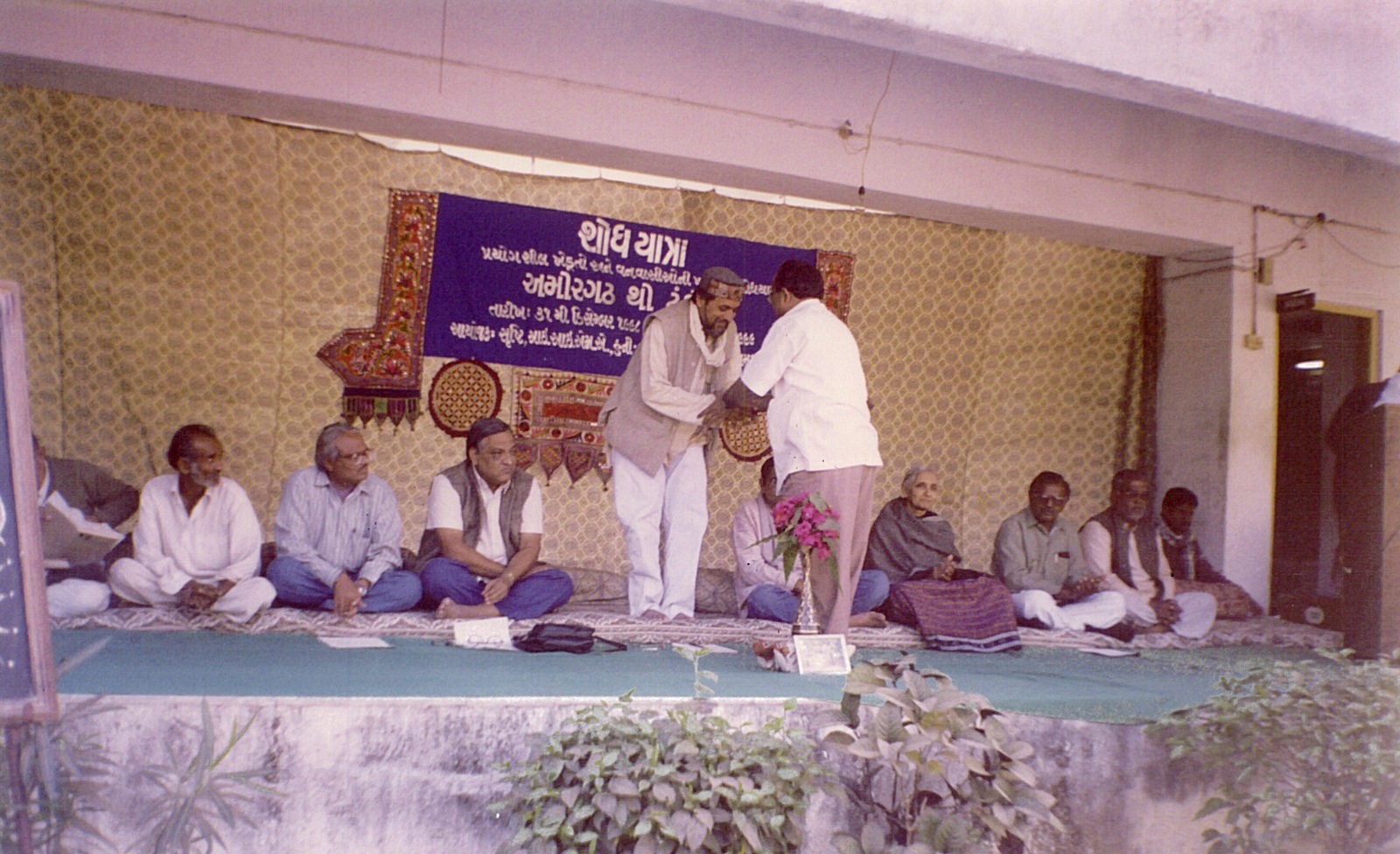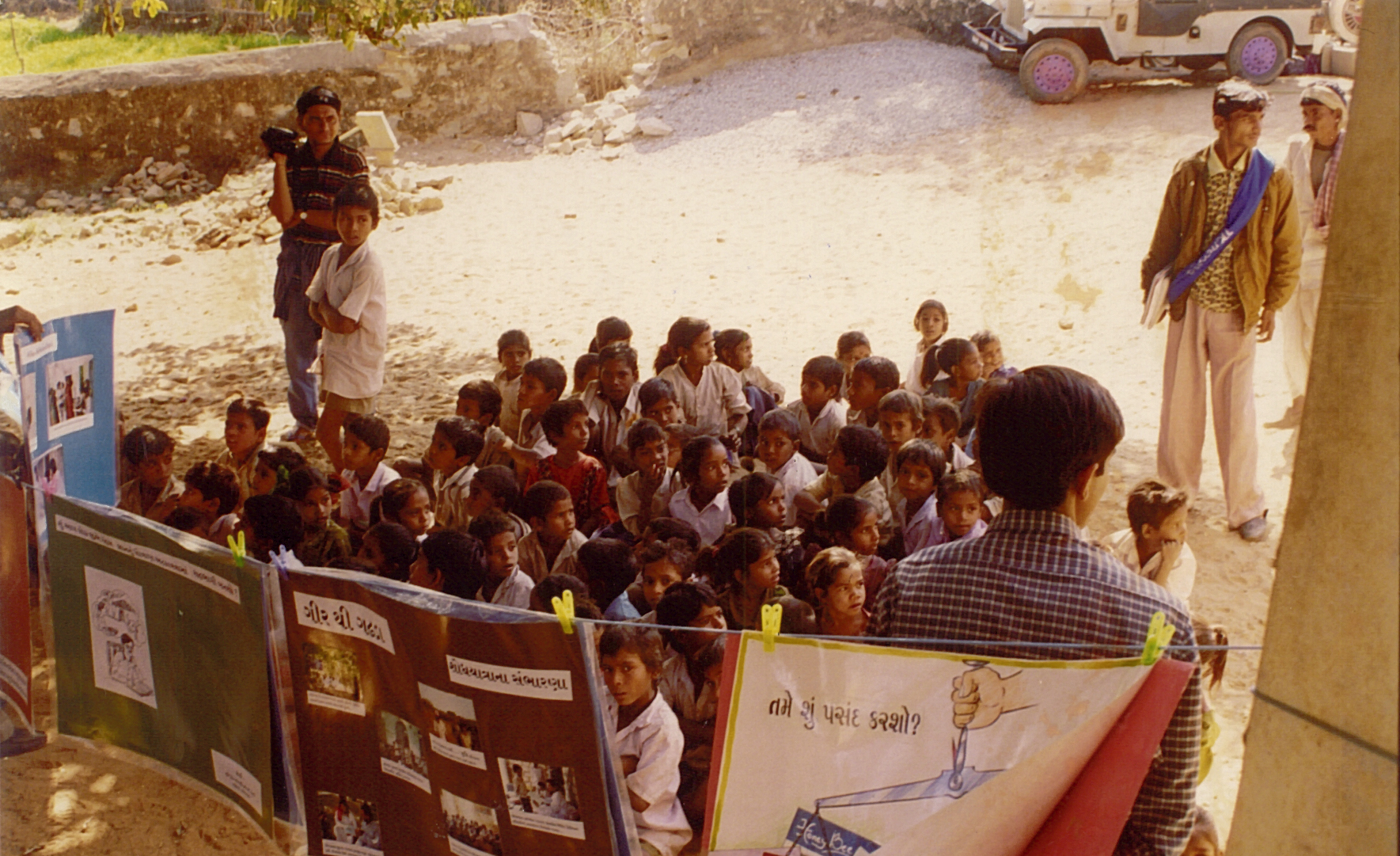Get Next Shodhyatra Update:
Phone:
079-27913293, 27912792
Email:
shodhyatra@sristi.org
A JOURNEY OF EXPLORATION
On the afternoon of December 31, 1998, we undertook our second Shodh Yatra through the villages of North Gujarat. In the course of the next seven days, we covered more than 150 km on foot. Full of energy and determination, we started our journey from Amirgarh, a village around 35 km from Palanpur. It was an occasion for the Honey Bee family including field staff, wellwishers and professionals, to get together with the innovators we have supported for years. Since part of our journey lead us through the Jessore Sloth Bear Sanctuary, we could use it as an opportunity to generate awareness for conservation.
The journey was an opportunity to search within us, drawing inspiration from the thinking and lifestyle of the people we met on our way. Premjibhai, the person who had single handedly sown more than 45 truckloads of seeds in Gujarat, was a real inspiration. When we started from Uplav Bandh on the morning of the second day, each one of us decided to carry seeds to sow on both sides as we walked down the forest. Premjibhai told us of his involvement in watershed development and how he has successfully motivated villagers to construct a check dam for Rs 12,000, the kind of project on which the government usually spends lakhs. It was quite amazing that nobody had tried his simple formula before. We had all heard about the genius of Karimbhai and his knowledge of plants. He too was with us and as we walked with him, we realized that we could not have found a better guide. He knew the forest like the back of his hand and had answers to every query about any plant. In fact, he arranged the seeds that all of us sowed in the forest.
Perhaps none of us will be able to forget the cool shade of the mango tree at Karamdi. It was an old tree and had a girth of more than fifty feet. During our journey, we came across many such trees that were old and revered by the people. They were all intact with not a single mark of injury anywhere. Many of them even bore the marks of worship by the village folk, indicating that they were sacred trees.
The hospitality that we received from the villagers throughout the journey was remarkable. After lunch at Karamdi, we were to leave for Dabchitra, a village five kilometers away. Dharambhai, the Karamdi sarpanch, decided to accompany us with a gun and a dagger.
Many of us were amused but for Dharambhai it was a matter of pride. Later on, we discovered he had an amazing quality. He had a photographic memory. Though he was totally illiterate, he could still identify any particular card when asked to, from a bunch of business cards he carried with him. For him it was simply a matter of remembering the form of the letters and the words in the card and associating them with the appearance of the person to whom the card belonged!
At Dabchitra, the villagers gathered around a small fire that we had built to keep away the cold. The multimedia database was displayed to them and they saw and heard innovators describing their innovations. This did much to generate awareness and respect for creativity.
The diversity in the flora of the region is truly amazing. There were wild relative of the brinjal, lady’s finger and cucurbits that were endemic to this area. Limbabhai, a schoolteacher at Amirgarh and a medicinal plant enthusiast, was a boon to us as he shared his knowledge of the flora.
In the village Kumbhariya, we came across a temple with a strange deity, a stone idol of a man sitting on a motorcycle. We found out it was of a person whom everyone in the region liked and respected. He had fought for the rights of the laborers working in the nearby stone quarries. He was murdered while riding home one day. As a mark of respect and honour, the villagers had built this temple at the entrance of the village.
We held biodiversity contests for children in the villages and gave prizes to the ‘little geniuses’. At Sembalpani Ashram School, some children identified more than 125 plants!
We scouted for innovations in the different villages and honoured innovators. Since many innovators were walking with us, they were able to descibe their innovations to the people we met, the idea being that if they could innovate, so could others!
FLICKR GALLERY
